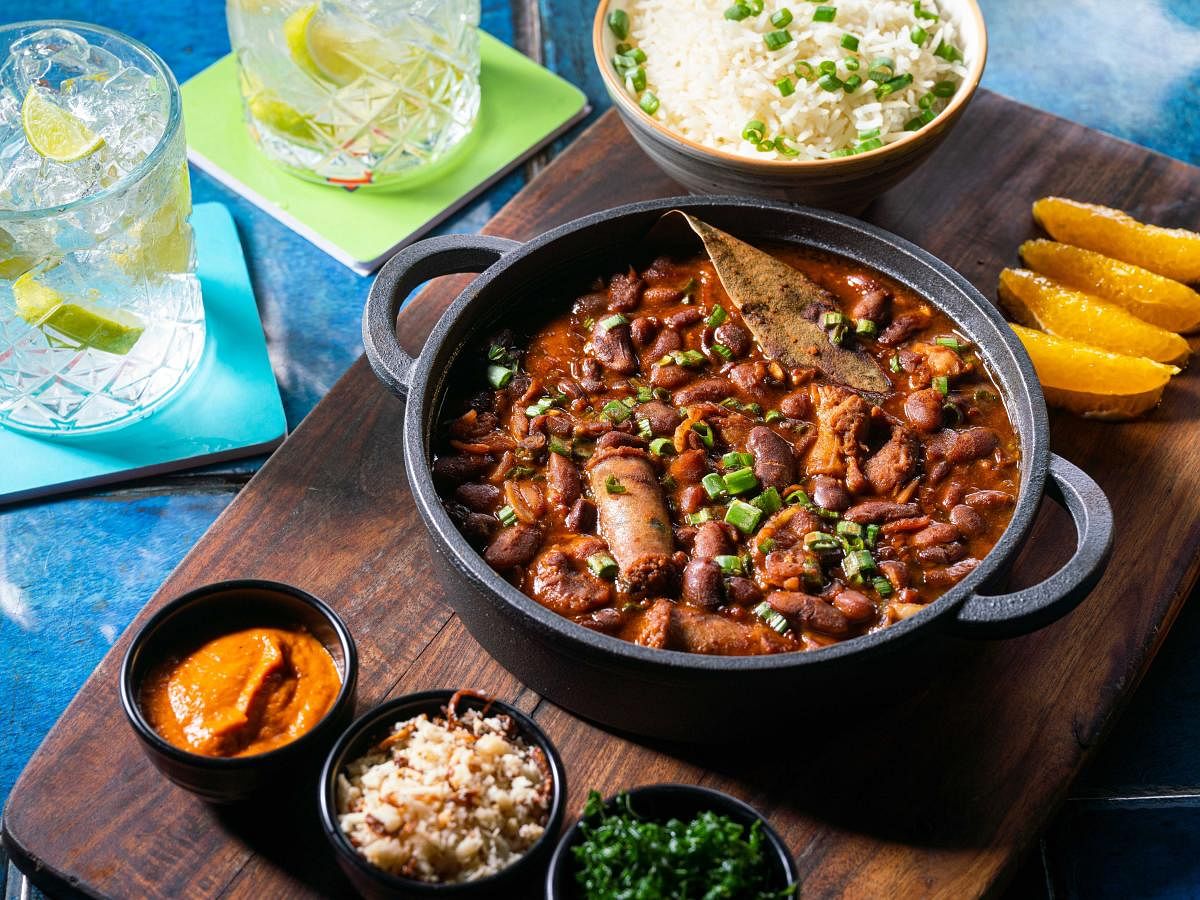
In a long-read article on Brazilian cultural identity, the BBC website mentions the opening theme song of a 1979 soap opera which translates to: 'Ten out of 10 Brazilians prefer beans'. If that was not emphasis enough, the soap itself was titled 'Wonder Bean'.
That should give you an idea about how keen as a bean Brazilians are about this versatile legume. Beans are not just the main ingredient in the large country's national dish Feijoada but are also a symbolic part of its multi-ethnic heritage and its turbulent history of colonisation and slavery. For the uninitiated, Feijoada is a black bean and pork stew usually consumed in generous amounts and typically accompanied by farofa (toasted cassava flour).
Guto Souza, an internationally renowned chef of Brazilian origin who has recently opened a restaurant in Bengaluru, tells us the curious history of Feijoada as we take a gastronomic journey through his home country, arguably one of the most ethnically diverse nations in the world. Many historians believe the dish was created out of sheer necessity by enslaved Africans. "After their plantation owners gave feasts, the slaves would pick up the leftovers — a pig's ears or feet, for instance — and mix them with orange rinds and black beans, thus creating the stew. Eventually, it became so popular that everyone began requesting for 'that stew' instead of the grandiose dishes prepared in the feasts," he chuckles.
Though this version of Feijoada's origins is now disputed by many, the dish itself continues to represent a synthesis of Brazil's Portuguese and indigenous cultures. But chefs like Guto have tried to move away a bit from the traditional dishes and are exploring the diversity of the cuisine by experimenting with cooking techniques, spices and flours. The chef, in fact, admits happily to having added a dash of garam masala to some of his more experimental dishes. One such innovation is the Beetroot Ravioli which was quite the first time beetroot made me excited! Slices of beetroot are filled with goat cheese, topped with nuts and served with saffron sauce to make for a great evening snack.
While on snacks, samosa has competition. Coxinha, a popular street snack in Brazil, is shredded chicken and creamy cheese covered in soft dough and deep-fried. Cheese seems to be ubiquitous in Brazilian street food with Pão de Queijo or bread made of cheese and tapioca flour being another popular on-the-go eat. "These cheesy breads originated from Minas Gerais, a region in the south where I come from," says the chef, adding that Pão is a traditional accompaniment to alcoholic drinks, especially the Brazilian beer Cerveja. Incidentally, Brazil is one of the world's largest consumers of beer.
No Brazilian food experience is complete without a mention of its meat and seafood. "Everyone knows Brazilians love their red meat. Barbequed is our preferred way — it is the sheer simplicity of charred meat that makes it so delicious," explains the chef. The cuisine also has a variety of fish stews which employ a wide range of ingredients from coconut milk to white wine and cheese.
One gets the feeling though that what perhaps makes Brazilian food truly remarkable is not just its Spanish, Portuguese, French, Italian and even Japanese influences (Brazil has a sizeable Japanese population) but also its people's palpable joy in making and eating it, reflected in the chef's twinkly eyes when he talks about its many wonders.